Sunday Morning Bread Baking
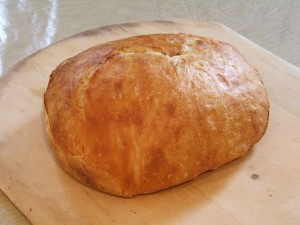
This morning, as I occasionally do on Sunday mornings, I baked up this nice loaf of crusty, rustic European bread. This particular loaf is destined for Elisa’s Ribollita recipe, but I’m also baking a second one, just to have around for the next few days.
One of life’s pleasures, which I first experienced when I was in the army and stationed in Italy, is a nice slice of a good, rustic, European loaf of bread. I still remember fondly a particular bread known as Pane di Lucca that I had in a trattoria called In Pelleria, which is located inside the ancient walled hill town of Lucca, in Tuscany.
But that was back in 1979, and there is simply no such loaf available commercially in New England. So beginning with The Italian Baker, Carol Field’s landmark book on Italian baking, I’ve been on a leisurely, two-decade long quest to bake a comparable loaf in my home oven. I’ve learned a lot about baking bread along the way, and I’ve experimented with a variety of flours, commercial cake yeasts, starters, and techniques, but the common point of failure for me has always been the issue of density. My breads have always been just slightly too dense. Properly baked, a good rustic European loaf will have a crisp, crackly crust, and inside, the crumb will be wonderfully large-holed, tender, and naturally flavorful.
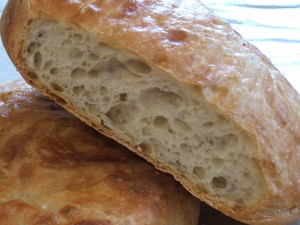
It was in the crumb that all of my experiments fell short. Many recipes include methods for increasing humidity in the oven, which is the secret for keeping the crust from forming long enough that the oven rise will produce the large-holed crumb texture I was looking for. Some have you put a pan of water directly on the heating element or on a rack below the rack containing the bread being baked. Others, inspired by an earlier episode of Julia Child’s PBS series, The French Chef, have you spray warm water into the oven periodically for the first 10-15 minutes of the bread baking process. While these methods produce some positive results, none of them are able to produce the final product I was looking for.
That had to wait until 2006, when I came across an article by Mark Bittman in the New York Times that extolled the virtues of Jim Lahey’s recipe for home baked bread. Lahey, the founder and owner of New York’s Sullivan Street Bakery, had been searching for the same thing I was searching for, a method for creating a truly amazing loaf of bread without the steam injection found in a professional baker’s oven. Lahey’s magic formula consisted of three important parts:
- an overly-hydrated (i.e., very wet) dough utilizing a tiny amount of yeast;
- an unusually long first rise (he recommends eighteen hours); and
- baking the loaf inside a covered, pre-heated dutch oven.
The very wet dough, combined with the covered dutch oven, creates its own steam bath, thereby delaying the hardening of the bread’s crust and allowing the crumb to have the large, uneven holes he was looking for. The eighteen-hour rise results in a hearty, complex flavor palette. Jim’s recipe created exactly the loaf of bread I’d been searching for, and I’ve been baking it ever since.
Since the New York Times published Lahey’s recipe, I’ve seen him demo the bread on Martha Stewart’s television show, and later I purchased his book, My Bread, which begins with his basic bread recipe and expands the concept into making other kinds of bread utilizing the low-yeast, high-water dough and steam chamber method he created with his original recipe. Between the original New York Times Article, published in 2006, and the publication of his book, the basic recipe changed slightly, using significantly less water (1 1/3 cups vs. 1 5/8 cups) in the dough and baking in a warmer oven (475° vs. 450°). I’ve tried both versions as well as several of my own modifications; the original recipe from the New York Times article is, for me, is the better of the two recipes. My only modification, which I believe makes a big difference, is that instead of just removing the lid of the dutch oven for the last 15-20 minutes of baking, I remove the half-baked loaf from the dutch oven and put it directly on the oven rack, close the door, and turn the oven off for this final period of baking. Doing this keeps the bottom crust from becoming hard and unpalatable.
Whether you have been on a quest for great homemade bread the way I have, or even if you’ve never baked a loaf of bread in your life, consider giving this recipe a try. I guarantee that you’ll produce a loaf superior to anything that is available commercially.

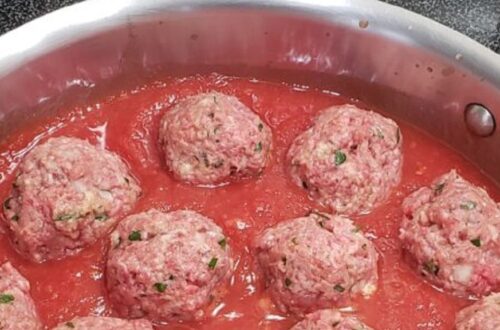
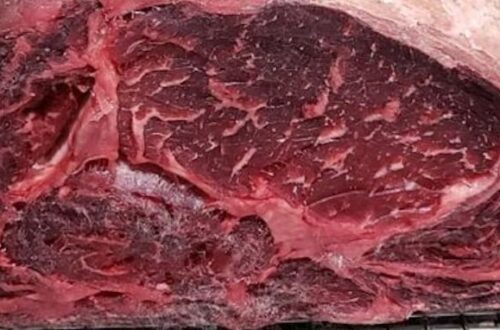
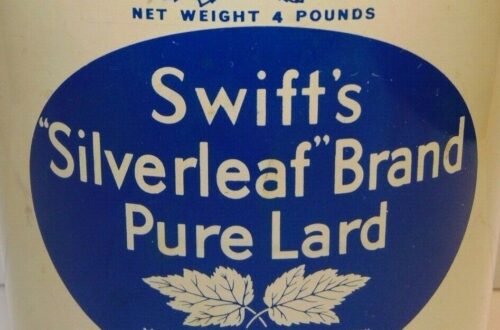
2 Comments
Maya
Wowwww! Look at the crust its mouth watering. I remember my grandma was baking like this, I love it when its hot put some real butter, crushed red pepper, little bit black pepper and some oregano with a glass of tea. Ohhh my, its something else :))
David Lister
Thanks! It’s as good as it looks … wonderful recipe. -Dave